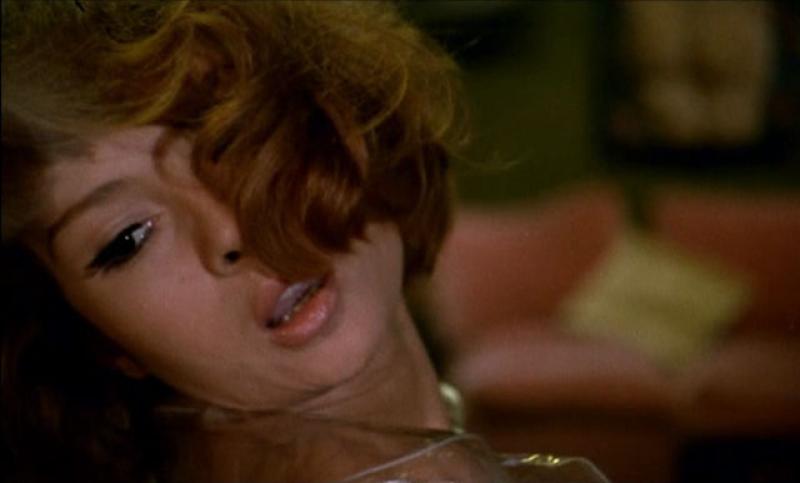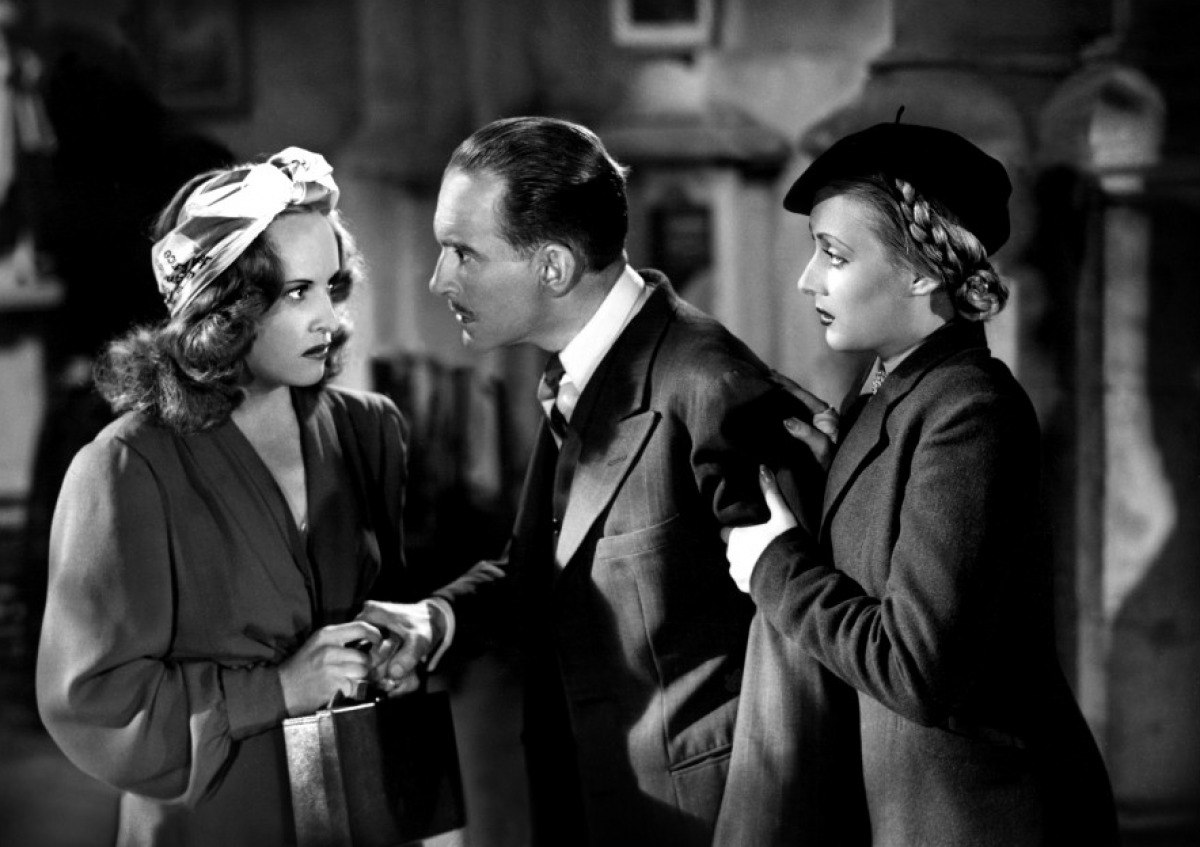Blu-ray: Henri-Georges Clouzot - Le Corbeau / Quai des Orfèvres / La Prisonnière | reviews, news & interviews
Blu-ray: Henri-Georges Clouzot - Le Corbeau / Quai des Orfèvres / La Prisonnière
Blu-ray: Henri-Georges Clouzot - Le Corbeau / Quai des Orfèvres / La Prisonnière
Striking trio from the French master of eroticism and violence

Henri-Georges Clouzot is one of the giants of French cinema history, such a versatile master of entertainment that his qualities as an auteur and art-house director are sometimes forgotten.
Best known for The Wages of Fear (1953) and Les Diaboliques (1955), both characterised by a nerve-rattling mix of violence and suspense, Clouzot was fascinated by extremes of human emotion, which he evoked in highly dramatic ways – his action sequences are shot and edited with formidable precision and an unerring sense of suspense. It is for this reason that he has often been compared to Hitchcock, but the strength of his films doesn’t come from holding back as it does with Hitch, but rather through almost operatic dramatisation. The unfolding of the narrative often features twists and turns – as much for the protagonists as for the watching audience. He is a master of the metaphorical cliff-edge.
Sexual and erotic passion surges through all his films
Le corbeau, made during the Nazi Occupation of France, describes the disintegration of a community in the face of a torrent of anonymous letters, denouncing various inhabitants of a small town, most of all the doctor, a marvellous performance by Pierre Fresnay (pictured below with Ginette Leclerc, left, and Michèle Francey, right). The film was attacked by both left and right – it was made through a Nazi-backed production company, Continental Films, but the portrayal of a poisoned community didn’t please the Church or supporters of Pétain either. The film has not aged, for it is much more than a chronicle of its times: Clouzot was fascinated by the mixture of good and evil in all of us – he was in no way a Manicheist, but instead a director who could not resist staring into the abyss and coming back with magnificently crafted portraits of the depths.
Sexual and erotic passion surges through all his films. There is a magnificent moment in Le corbeau where, after a series of smouldering looks, the über-sensual character played by Ginette Leclerc bites the doctor’s hand, as he is trying (albeit reluctantly) to silence her. In Quai des Orfèvres, the drama is driven by sexual obsession, a mesh of criss-crossing fatal attractions, including a beautifully understated but highly erotic relationship between the singer Marguerite (Suzy Delair) and her lesbian friend Dora (Simone Renan). The police inspector, in a totally assured performance by the great Louis Jouvet, navigates through the amorous passions, duplicity and latent violence with the mastery of a demi-god: canny, philosophical and in some way above it all. The undercurrent of sex in both these films surfaces more explicitly in La prisonnière, Clouzot’s last cinema work. It is less well-known than his other films, and was never distributed in the USA. It shares a great deal with Michael Powell’s Peeping Tom, Buñuel’s Belle de Jour and Antonioni’s Blow-Up, as one of the main characters, the trendy gallerist Stanley Hassler (a suitably spooky Laurent Terzieff), a specialist in kinetic and op art, has a fondness for photographing women in submissive poses. Josée (a sultry Elisabeth Wiener) wants to submit – to the horror of her husband Gilbert (Bernard Fresson), one of Hassler’s artists.
The undercurrent of sex in both these films surfaces more explicitly in La prisonnière, Clouzot’s last cinema work. It is less well-known than his other films, and was never distributed in the USA. It shares a great deal with Michael Powell’s Peeping Tom, Buñuel’s Belle de Jour and Antonioni’s Blow-Up, as one of the main characters, the trendy gallerist Stanley Hassler (a suitably spooky Laurent Terzieff), a specialist in kinetic and op art, has a fondness for photographing women in submissive poses. Josée (a sultry Elisabeth Wiener) wants to submit – to the horror of her husband Gilbert (Bernard Fresson), one of Hassler’s artists.
The triangle sizzles with unspoken violence – the mirror of the sadomasochistic scenes which Hassler photographs – and culminates in an unexpected and very dramatic dénouement, as characteristic of Clouzot’s mastery as anything else he created. Each of these releases is supplemented by an informative and thought-provoking bonus, containing valuable material about Clouzot, the making of the films and their content, with contributions from French critics and historians.
rating
Explore topics
Share this article
The future of Arts Journalism
You can stop theartsdesk.com closing!
We urgently need financing to survive. Our fundraising drive has thus far raised £49,000 but we need to reach £100,000 or we will be forced to close. Please contribute here: https://gofund.me/c3f6033d
And if you can forward this information to anyone who might assist, we’d be grateful.

Subscribe to theartsdesk.com
Thank you for continuing to read our work on theartsdesk.com. For unlimited access to every article in its entirety, including our archive of more than 15,000 pieces, we're asking for £5 per month or £40 per year. We feel it's a very good deal, and hope you do too.
To take a subscription now simply click here.
And if you're looking for that extra gift for a friend or family member, why not treat them to a theartsdesk.com gift subscription?
more Film
 London Film Festival 2025 - a Korean masterclass in black comedy and a Camus classic effectively realised
New films from Park Chan-wook, Gianfranco Rosi, François Ozon, Ildikó Enyedi and more
London Film Festival 2025 - a Korean masterclass in black comedy and a Camus classic effectively realised
New films from Park Chan-wook, Gianfranco Rosi, François Ozon, Ildikó Enyedi and more
 After the Hunt review - muddled #MeToo provocation
Julia Roberts excels despite misfiring drama
After the Hunt review - muddled #MeToo provocation
Julia Roberts excels despite misfiring drama
 Ballad of a Small Player review - Colin Farrell's all in as a gambler down on his luck
Conclave director Edward Berger swaps the Vatican for Asia's sin city
Ballad of a Small Player review - Colin Farrell's all in as a gambler down on his luck
Conclave director Edward Berger swaps the Vatican for Asia's sin city
 London Film Festival 2025 - Bradley Cooper channels John Bishop, the Boss goes to Nebraska, and a French pandemic
... not to mention Kristen Stewart's directing debut and a punchy prison drama
London Film Festival 2025 - Bradley Cooper channels John Bishop, the Boss goes to Nebraska, and a French pandemic
... not to mention Kristen Stewart's directing debut and a punchy prison drama
 London Film Festival 2025 - from paranoia in Brazil and Iran, to light relief in New York and Tuscany
'Jay Kelly' disappoints, 'It Was Just an Accident' doesn't
London Film Festival 2025 - from paranoia in Brazil and Iran, to light relief in New York and Tuscany
'Jay Kelly' disappoints, 'It Was Just an Accident' doesn't
 Iron Ladies review - working-class heroines of the Miners' Strike
Documentary salutes the staunch women who fought Thatcher's pit closures
Iron Ladies review - working-class heroines of the Miners' Strike
Documentary salutes the staunch women who fought Thatcher's pit closures
 Blu-ray: The Man in the White Suit
Ealing Studios' prescient black comedy, as sharp as ever
Blu-ray: The Man in the White Suit
Ealing Studios' prescient black comedy, as sharp as ever
 The Woman in Cabin 10 review - Scandi noir meets Agatha Christie on a superyacht
Reason goes overboard on a seagoing mystery thriller
The Woman in Cabin 10 review - Scandi noir meets Agatha Christie on a superyacht
Reason goes overboard on a seagoing mystery thriller
 London Film Festival 2025 - crime, punishment, pop stars and shrinks
Daniel Craig investigates, Jodie Foster speaks French and Colin Farrell has a gambling habit
London Film Festival 2025 - crime, punishment, pop stars and shrinks
Daniel Craig investigates, Jodie Foster speaks French and Colin Farrell has a gambling habit
 I Swear review - taking stock of Tourette's
A sharp and moving tale of cuss-words and tics
I Swear review - taking stock of Tourette's
A sharp and moving tale of cuss-words and tics
 A House of Dynamite review - the final countdown
Kathryn Bigelow's cautionary tale sets the nuclear clock ticking again
A House of Dynamite review - the final countdown
Kathryn Bigelow's cautionary tale sets the nuclear clock ticking again

Add comment